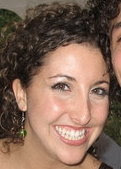





1. Me with my first graders at the Museum in Cabra for a field trip.
2. Students I tutor and their Christmas tree.
3. Students playing instruments for the Christmas show at my school.
4. Students singing for the Christmas show at my school.
5. Nativity Scene (described below).
6. more nativity scene
Christmas in Spain is unlike anything I've ever seen before. I will try to explain as best I can...
First of all there is a HUGE nativity scene, called a Belén (Bethlehem) in the center of town with fountain type things and real
live plants, (some towns have live animals, too) and many different buildings with other characters that I don't remember reading about in the Bible. If you were wondering what else was happening outside the manger area while Jesus was being born, look no further. :)


In one of the other towns close to me there is a huge Belén made of chocolate.
Every street has lights hanging from above and during the day, all doors are open, welcoming shoppers. Here is a picture of one of the streets in my town on a Monday night.
 There are people on the street selling lottery tickets and passing out little candies and gifts. I'm specifically thinking of this one girl who stands outside the perfume store in a female version of a Santa suit, but in blue and white. I now have a fake rose from her.
There are people on the street selling lottery tickets and passing out little candies and gifts. I'm specifically thinking of this one girl who stands outside the perfume store in a female version of a Santa suit, but in blue and white. I now have a fake rose from her.There is a Christmas train for little kids. They ride all around the town clanking the bells of the train and waving at the the people passing. There is also a group of people who march around banging drums. My roommates and I ran out on our balcony to see what the commotion was and they were dressed up as different characters, like Shrek, Minnie Mouse and Bart Simpson. I guess Santa wasn't invited...

Speaking of Santa, he is trying to climb over everyone's balconies here. What happened to the chimney? Can y
 ou see him in the picture on the left? :)
ou see him in the picture on the left? :)
In Spain, they also celebrate Reyes Magos in January. This is when the three kings come and give presents to the kids as well. So, some people have 3 little stuffed kings hanging from their balconies so it looks like they are trying to get inside also!
My favorite part is the music. There are speakers in the streets so everywhere you walk, there is Christmas music playing (in Spanish and in English!) and you feel like you're in a movie.
And speaking of movies, I did get to see one Christmas movie this year- It's a Wonderful Life. It was in English but of course I read the Spanish subtitles the whole time to see how different the translation was.
I'm spending my Christmas this year with my friend Tess and her family in Madrid. The day after Christmas, my Dad is coming to visit for a week! We're doing Madrid, Barcelona and hopefully some surrounding towns. When he leaves, I'm flying to Ireland to meet up with my roommate Michelle for 5 days. Then we are meeting my other roommate, Claire, in Scotland for another 5 days.
I will be back on January 10th.
Sorry this post is so rushed and that I have no idea what I'm doing when it comes to the layout of these pictures. I really wanted you to see some pictures and I promise I will try harder on my next post to make them look more organized. :)
I hope you all have a Merry Christmas and Happy New Year!






